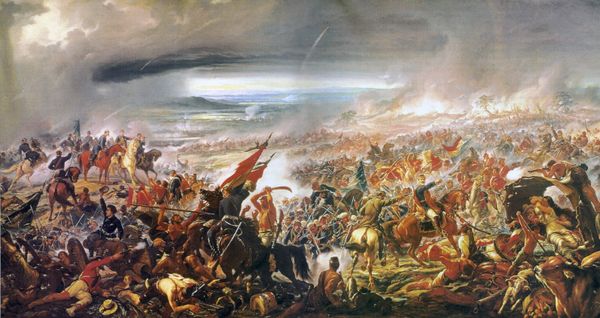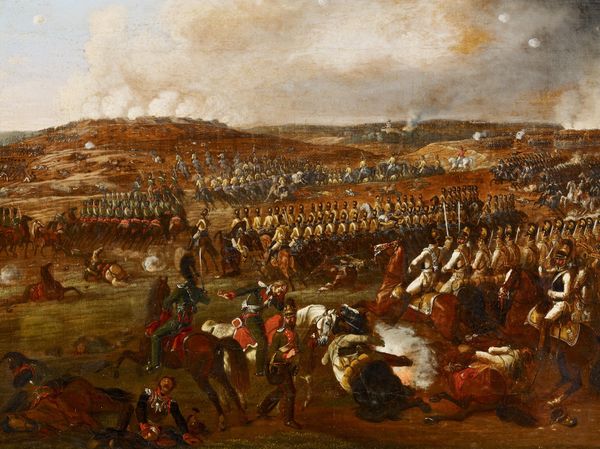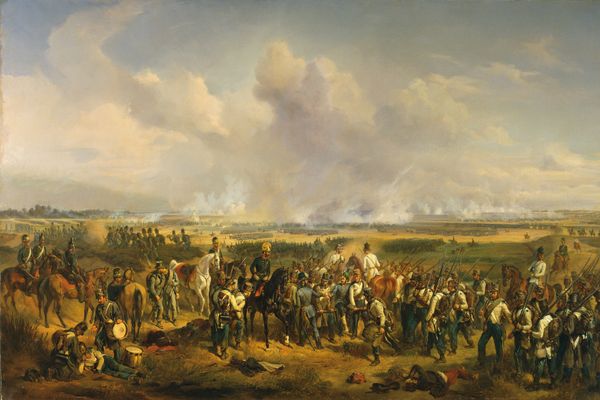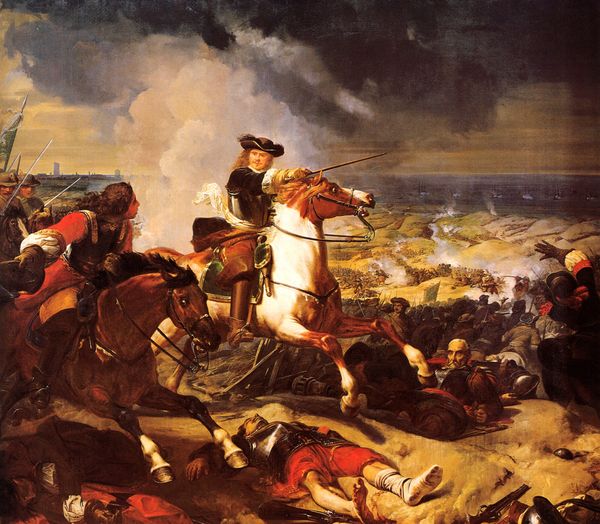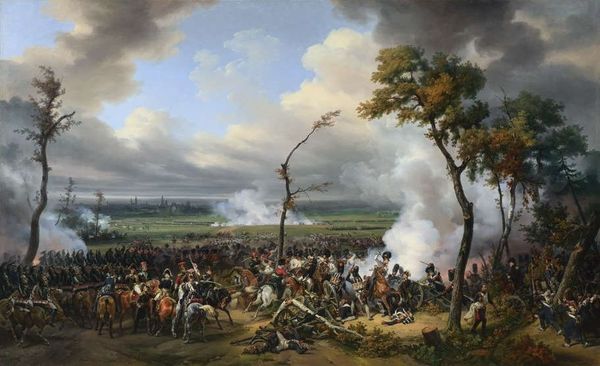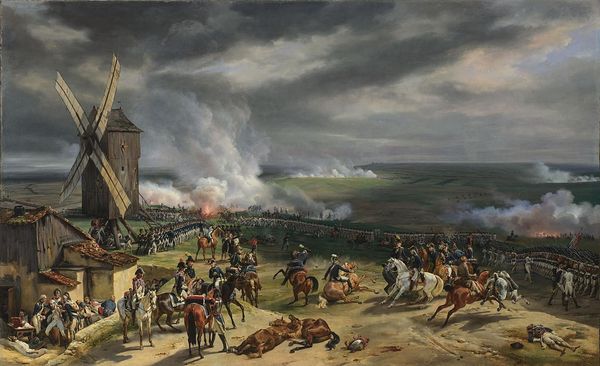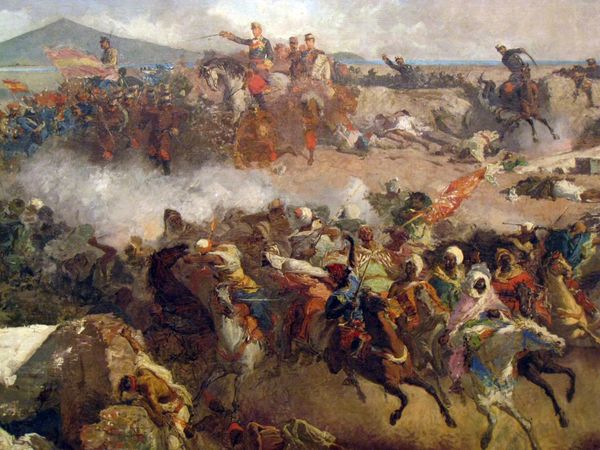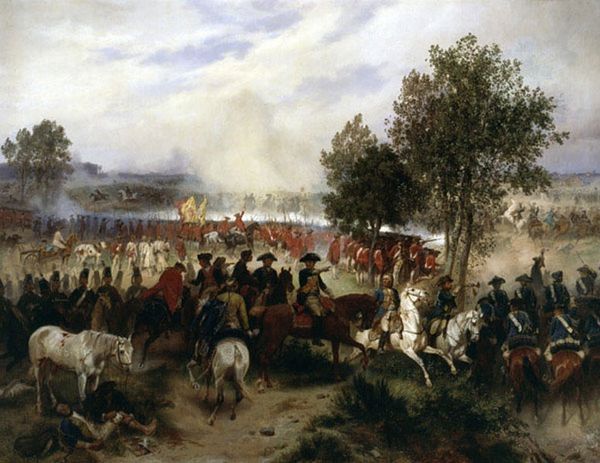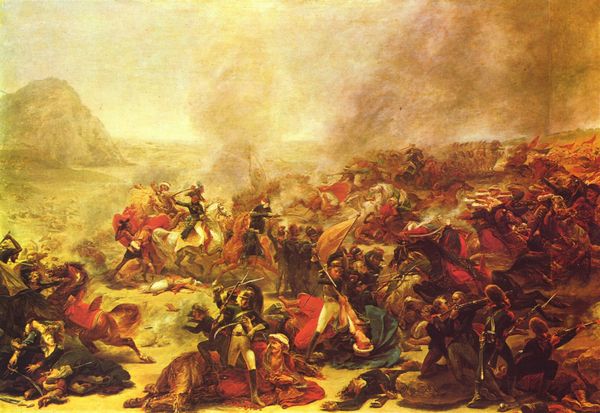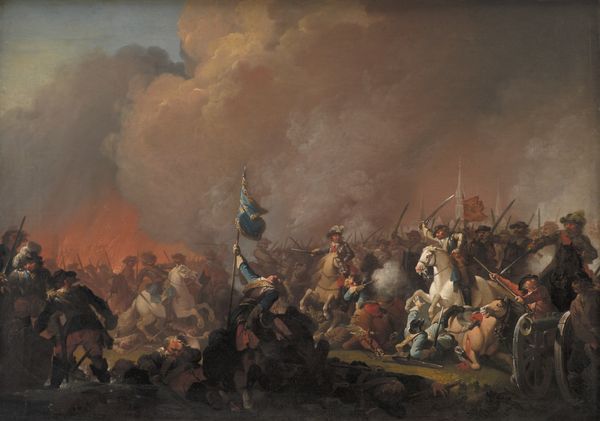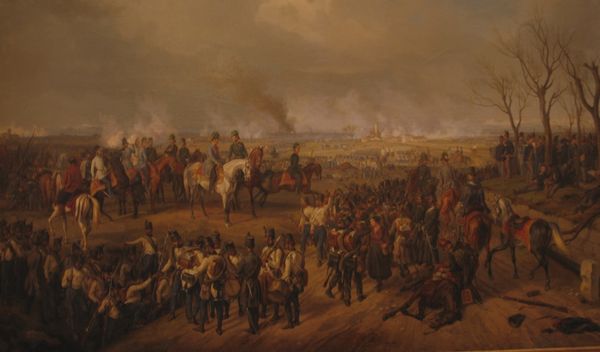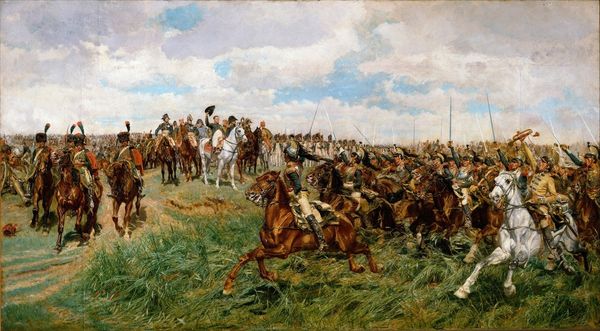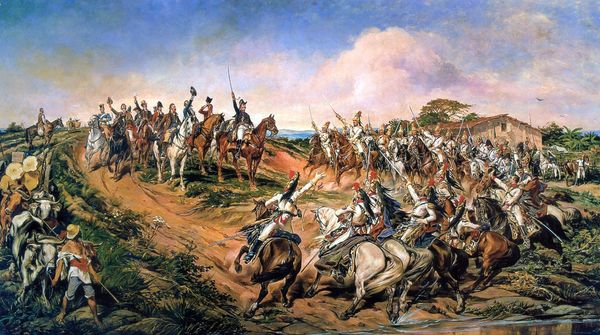
painting, oil-paint
#
narrative-art
#
painting
#
oil-paint
#
landscape
#
oil painting
#
history-painting
#
academic-art
#
realism
Copyright: Public domain
Curator: Wow, what a flurry of action. It feels overwhelming, almost chaotic. The figures blend into a swirling mass. Editor: This is Henry Arthur McArdle’s "Battle of San Jacinto," painted in 1895 using oil on canvas. It depicts a pivotal moment in Texas history. Looking closely, what can you tell us about the making? The production of this monumental painting? Curator: The sheer scale must have required a significant studio setup, lots of labor, from preparing the canvas to mixing pigments, layering the paint. And considering the time, sourcing quality materials would have involved specific trade routes and economic networks. What do you think about the socio-political factors that shaped its creation? Editor: Well, McArdle’s project received significant institutional support. Think about it—commissions of historical paintings often came with specific agendas, shaping how narratives are visually constructed and how we remember events. The composition itself is clearly meant to be viewed by a public. It elevates certain figures and groups while possibly marginalizing others, reflecting the prevailing social narratives about Texas independence. The placement of the smoke perhaps mirrors the rising tensions of the moment. Curator: The canvas is loaded with texture, heavy impasto in the smoke, juxtaposed with the smoother surfaces elsewhere. The manipulation of the materials serves the dramatic narrative perfectly, drawing the eye. And notice how those stark contrasts also enhance the chaotic atmosphere that you mentioned earlier, don’t you think? The labor involved in conveying such drama cannot be understated. What do you observe in terms of the intended audience? Editor: Absolutely, it was likely meant for public display in a space accessible to the Texan population, serving to solidify a particular heroic vision of the Texas Revolution. That idealized representation becomes a cultural tool shaping identity and memory. I think the way that we frame and display the art influences reception of its socio-historical importance. Curator: Examining this piece has brought forward some really great points, especially thinking of the labor beyond the visible artwork, highlighting networks and production methods involved in its creation. Editor: I concur; by exploring the socio-political factors, we get to unpack the history embedded within it, questioning the artwork and the grand narrative it attempts to portray. Thank you for lending new perspectives, as always.
Comments
No comments
Be the first to comment and join the conversation on the ultimate creative platform.

